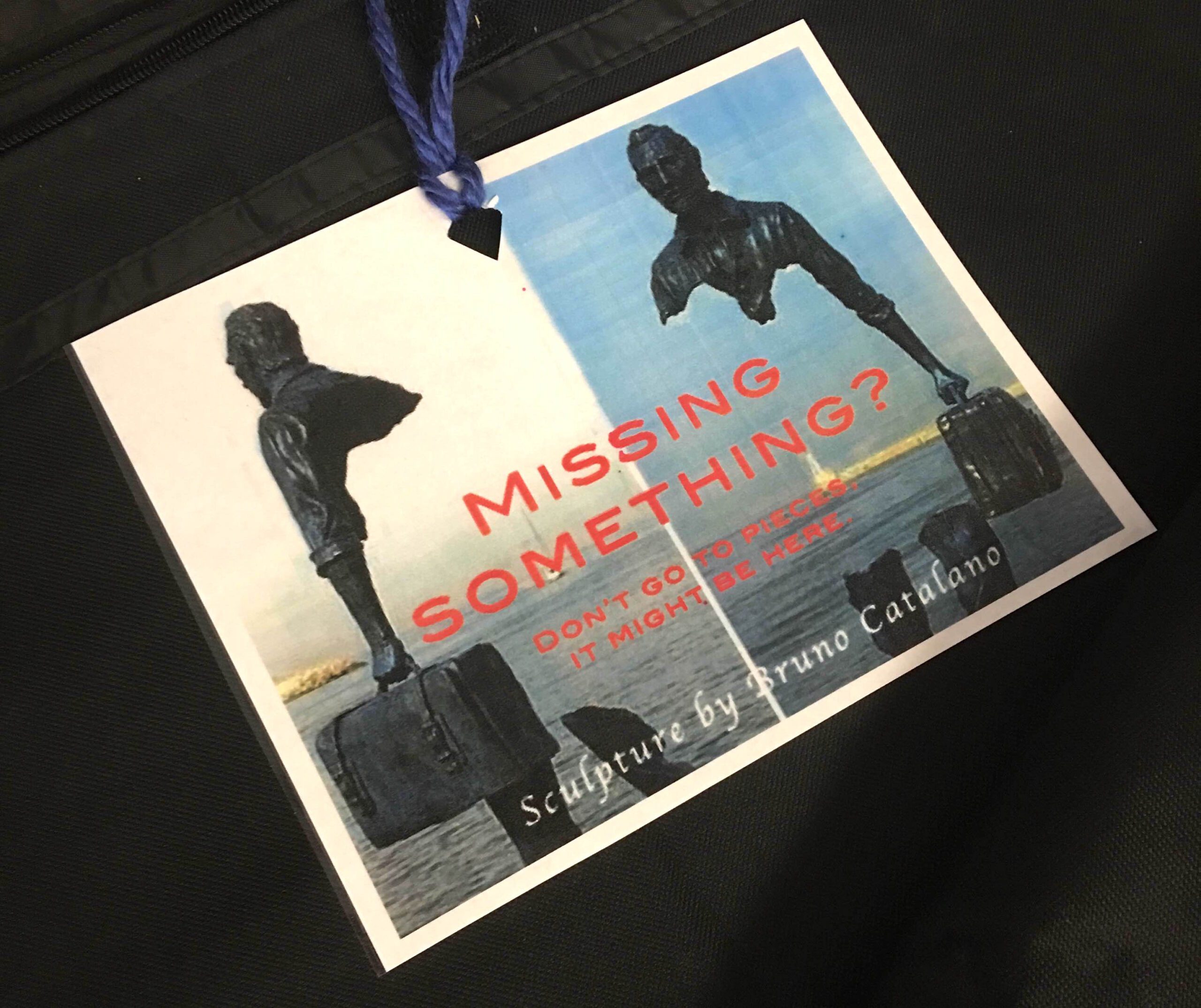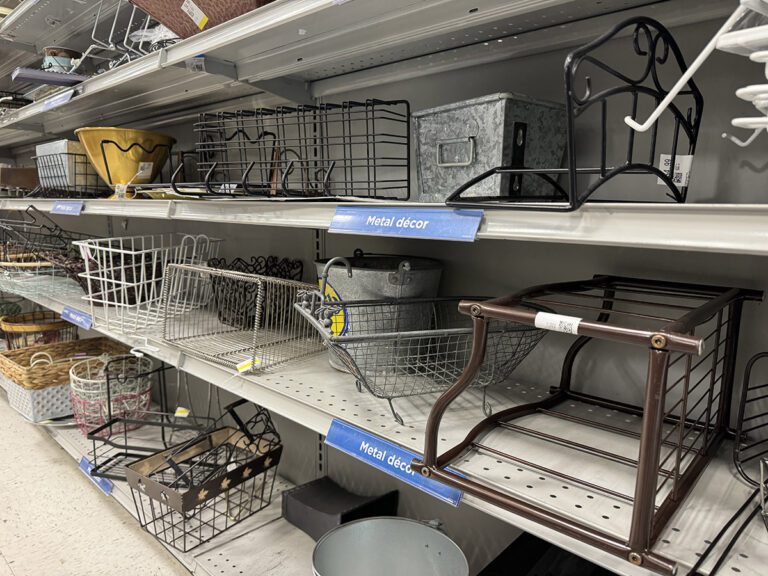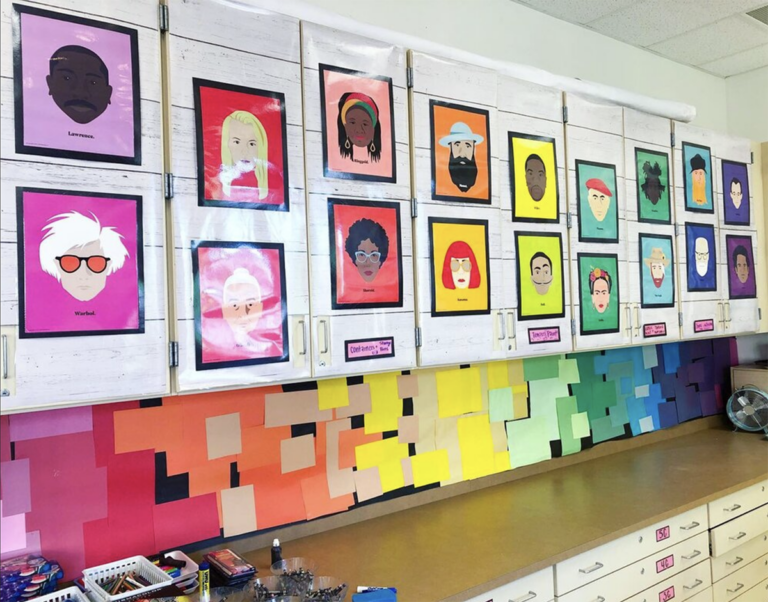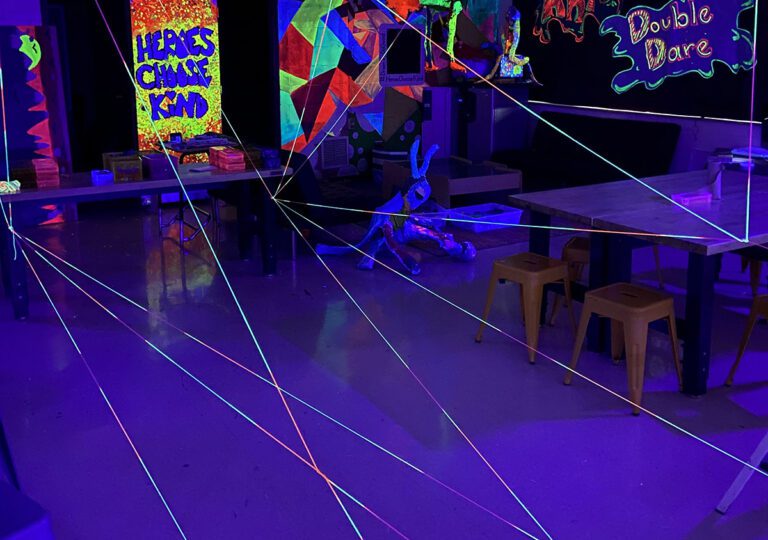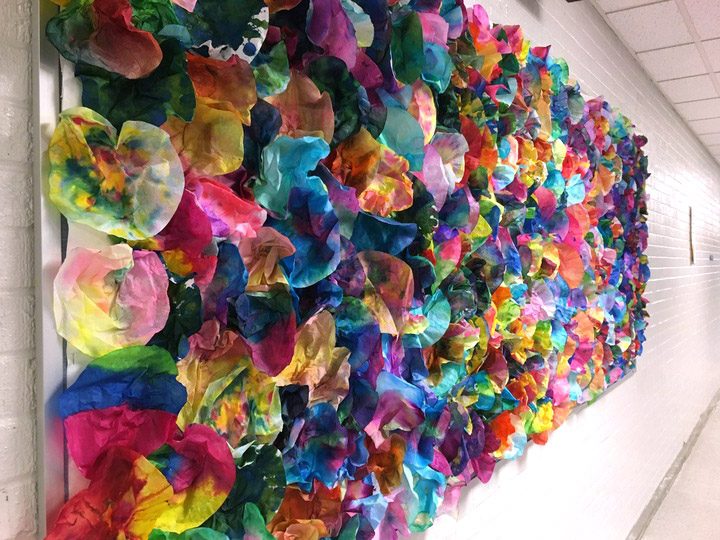As art teachers, how often do we come across a paper with no name on it? I think if we’re honest, it is much more often than we’d like.
Even with constant reminders, portfolios for each child, and name stickers for the youngest, I still wind up with a pile of nameless and homeless work by the end of each week.
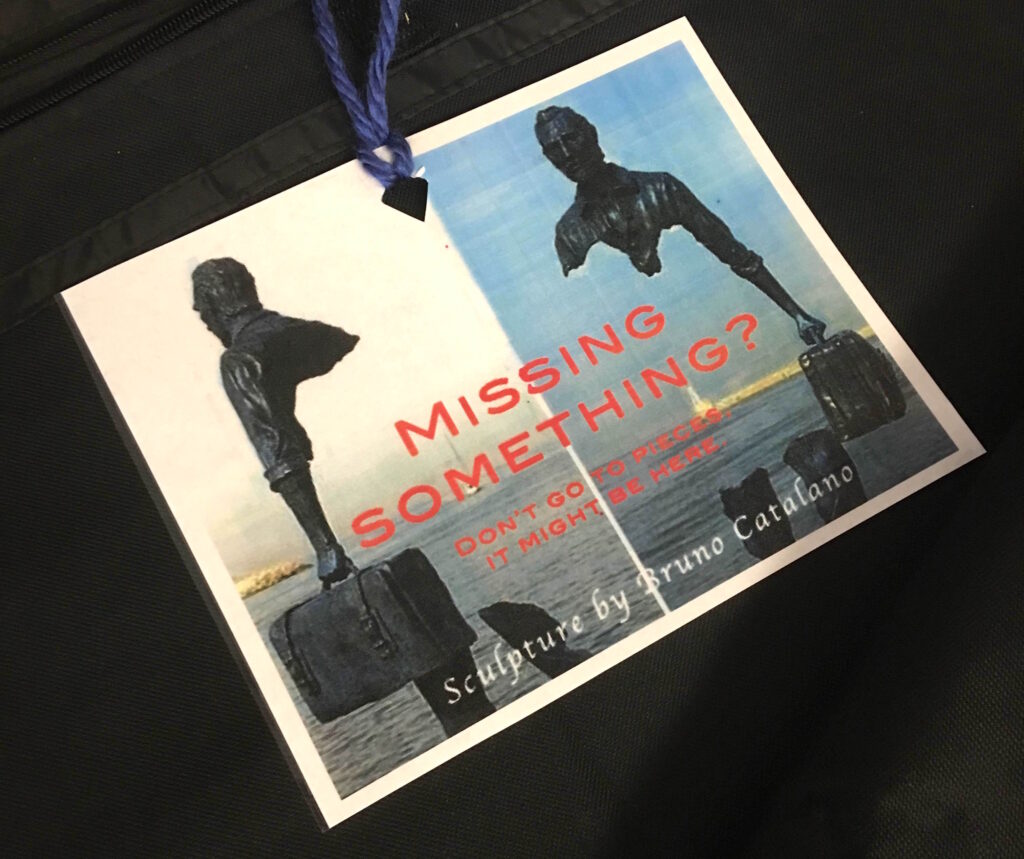
Here are a few ways to rescue more work from obscurity and maybe even reunite it with its owner.
For Recently Found Pieces
- Option 1: Create an “Artwork Lost & Found”
Using a large file folder, create an artwork lost and found area. Make sure you display it prominently in your room. Whenever you come across a nameless piece, slide it into the folder. When a student is missing something, the folder should be the first place they check.
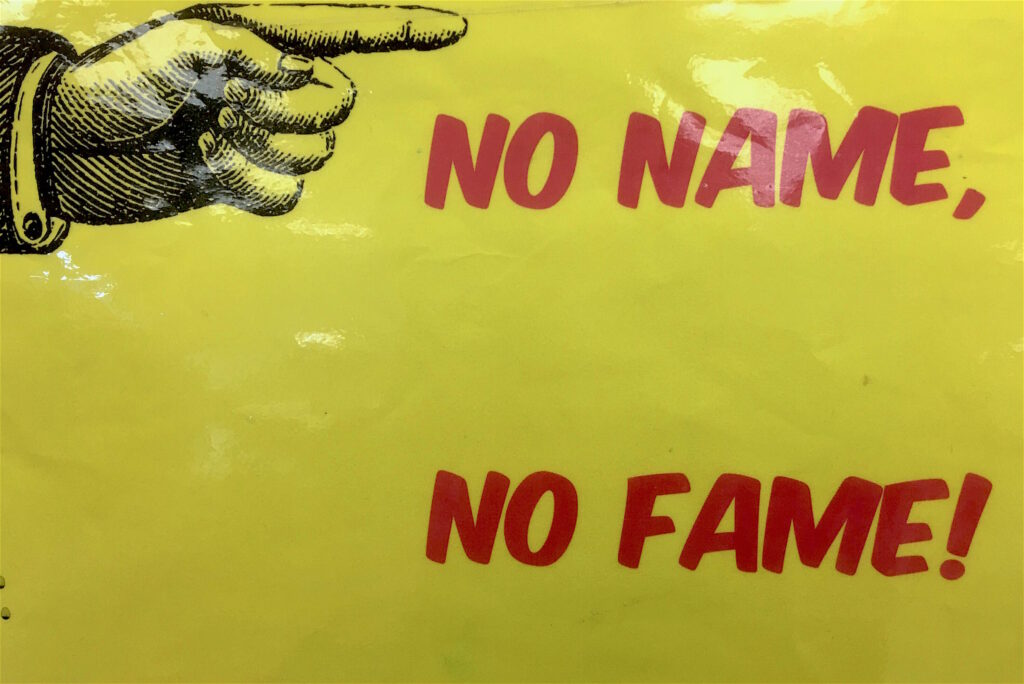
- Option 2: Display Nameless Art
Create a spot in your room that is reserved for displaying nameless art. You’ll have no shortage of choices when you pick from your lost and found. Often, students don’t want to dig around through lots of work to find their own. However, if they see it displayed and hung with care for all to see, they are encouraged to claim it.
For Older Pieces
- Option 1: Upcycle Unclaimed Work
In my experience, after a while, the Lost & Found gets pretty full. If pieces have been sitting for a long time, consider recycling them into a special bin. That way, other students can repurpose the colorful drawings and scraps. My students love using the shape cutters on recycled paintings because they make great collage elements.
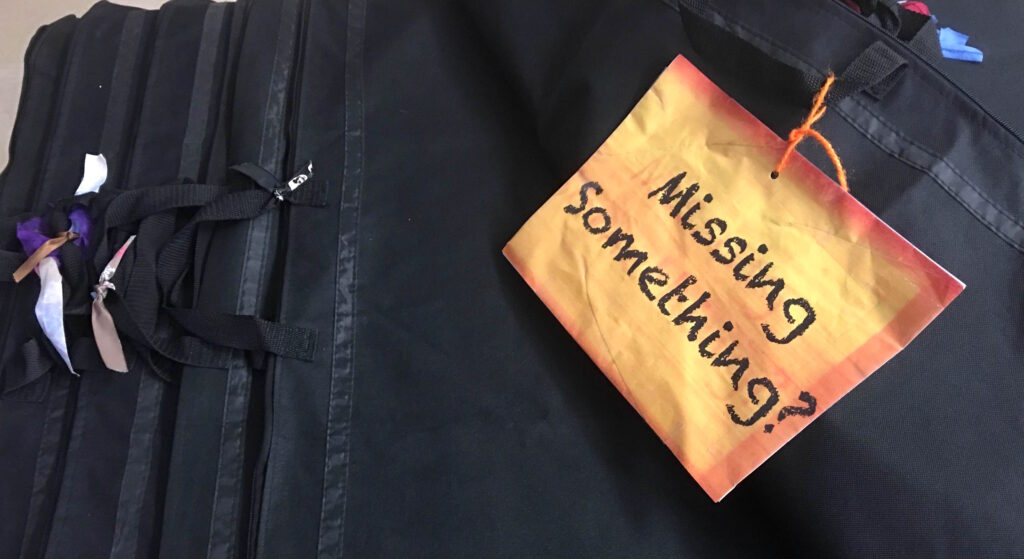
- Option 2: Have an Auction
At the end of the year, hold an art auction where all unwanted, unclaimed, or unnamed work is sold to the highest bidder. This gives students a chance to learn about the auction process as well as allowing all the work to find a home where it is appreciated. You can use class reward points or monopoly money as the bidding currency. It is a fantastic end-of-year lesson that reinforces how important their art is to you and their peers.
Here is to hoping you find less and less nameless and abandoned art in your room!
How do you handle no name projects?
What is your most successful way of dealing with this issue?
Magazine articles and podcasts are opinions of professional education contributors and do not necessarily represent the position of the Art of Education University (AOEU) or its academic offerings. Contributors use terms in the way they are most often talked about in the scope of their educational experiences.
